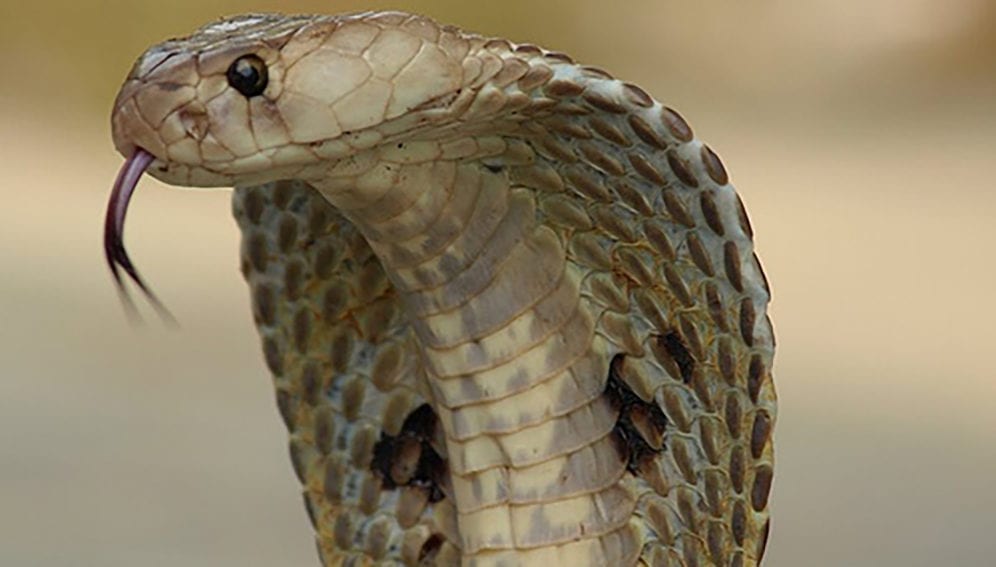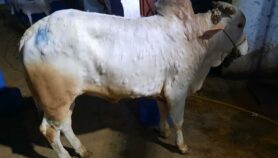By: Sanjeet Bagcchi
Send to a friend
The details you provide on this page will not be used to send unsolicited email, and will not be sold to a 3rd party. See privacy policy.
[NEW DELHI] India needs region-specific anti-venoms to deal with a large variety of venomous snakes in order to reduce death and morbidity from snakebite, says a new study published 5 December in PLOS Neglected Tropical Diseases.
In India some 46,000 people die and 140,000 face disability every year from snakebite. The commercially available antidote is a polyvalent antivenom which, when injected into the bloodstream, is expected to neutralise neurotoxic (toxic to nerves) or cytotoxic (toxic to cells) venom.
“Commercial Indian antivenom completely failed to protect mice injected with the venom of the monocled cobra from Arunachal Pradesh”
Kartik Sunagar, Indian Institute of Science
However, in the study, Senji Laxme from Indian Institute of Science, Bangalore, and colleagues show that the antivenom used in India works only against the ‘big four’ — the common krait (Bungarus caeruleus), spectacled cobra (Naja naja), saw-scaled viper (Echis carinatus) and Russell’s viper (Daboia russelii) — but not against several other medically important species.
Snakes not covered by the available antivenom include India’s most venomous snake, the Sind krait (Bungarus sindanus). The researchers note that for venomous snakes other than the ‘big four’ there is no specific anti-venom. Instead, the same antivenom is used to treat bites by all the ‘big four’ indiscriminately, often with adverse consequences.
The researchers studied the venom composition, activities and toxicities of India’s neglected venomous snake species, including the monocled cobra (Naja kaouthia), Sochurek's saw-scaled viper (Echis carinatus sochureki), banded krait (Bungarus fasciatus), and Sind krait, and found that the standard Indian antivenom had “disturbing” deficiencies.
Additionally, there are intraspecies differences in venom composition and activity, depending on location and other factors.
Kartik Sunagar, an author of the study and assistant professor, Indian Institute of Science, Bangalore, tells SciDev.Net that the venom of spectacled cobra found in West Bengal is strongly neurotoxic while that of the same species in Arunachal Pradesh state is extremely cytotoxic.
“Surprisingly, the tested Indian antivenom also poorly neutralised the venom of the northern population of the common krait, one of the ‘big four’ against which it is produced,” Sunagar says. “Commercial Indian antivenom completely failed to protect mice injected with the venom of the monocled cobra from Arunachal Pradesh.”
According to Sunagar, there is an urgent need for specific antivenoms that can efficiently neutralise bites from all snake varieties. “The commercialisation of these life-saving drugs, which is currently decided by a tender system in various states in India, should rather be governed by the outcomes of stringent preclinical evaluations,” he suggests.
Eminent herpetologist and co-author of the study Romulus Whitaker from the Madras Crocodile Bank Trust and Centre for Herpetology, Tamil Nadu state, tells SciDev.Net that India needs either region-specific antivenom or antivenom made with venoms pooled from different regions and from the species not yet used in antivenom production.”
However, Himmat Saluba Bawaskar, an expert in internal medicine at the Bawaskar Hospital and Research Center, Maharashtra state, tells Scidev.Net that in his 40-year clinical experience he has observed that snakebites associated with the ‘big four’ mostly respond well to the currently available polyvalent antivenom.
“As a clinician I notice that almost all my patients respond well to polyvalent anti-snake venom, provided they reach the hospital early and receive adequate antivenom,” Bawaskar says.
This piece was produced by SciDev.Net’s Asia & Pacific desk.














